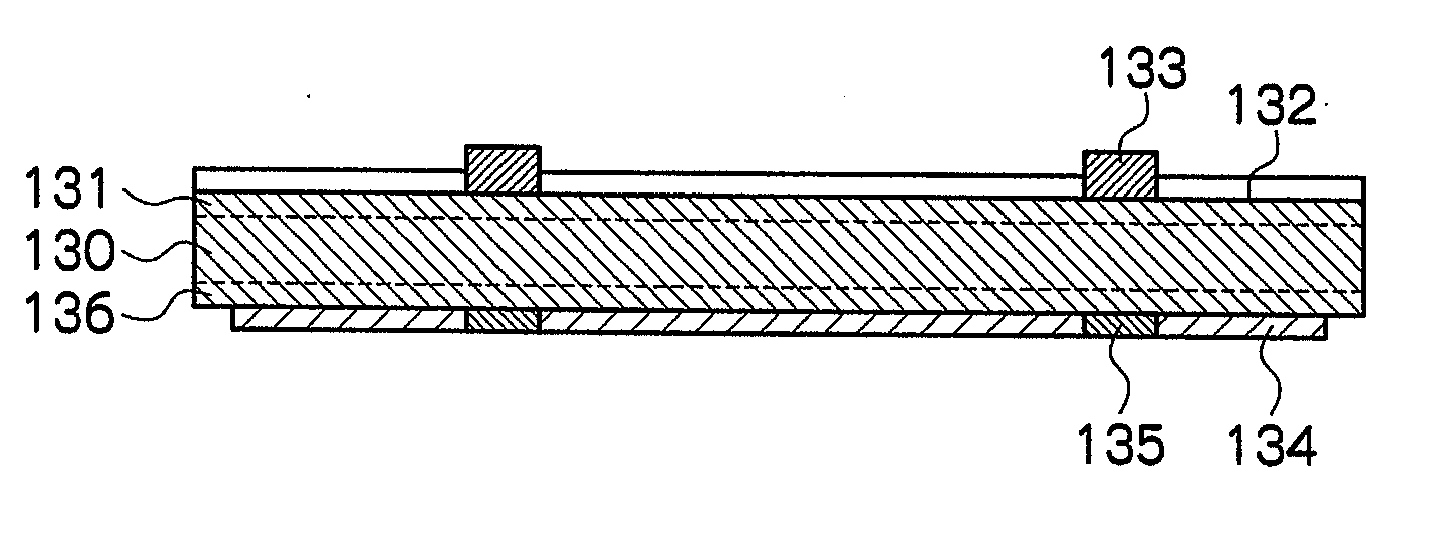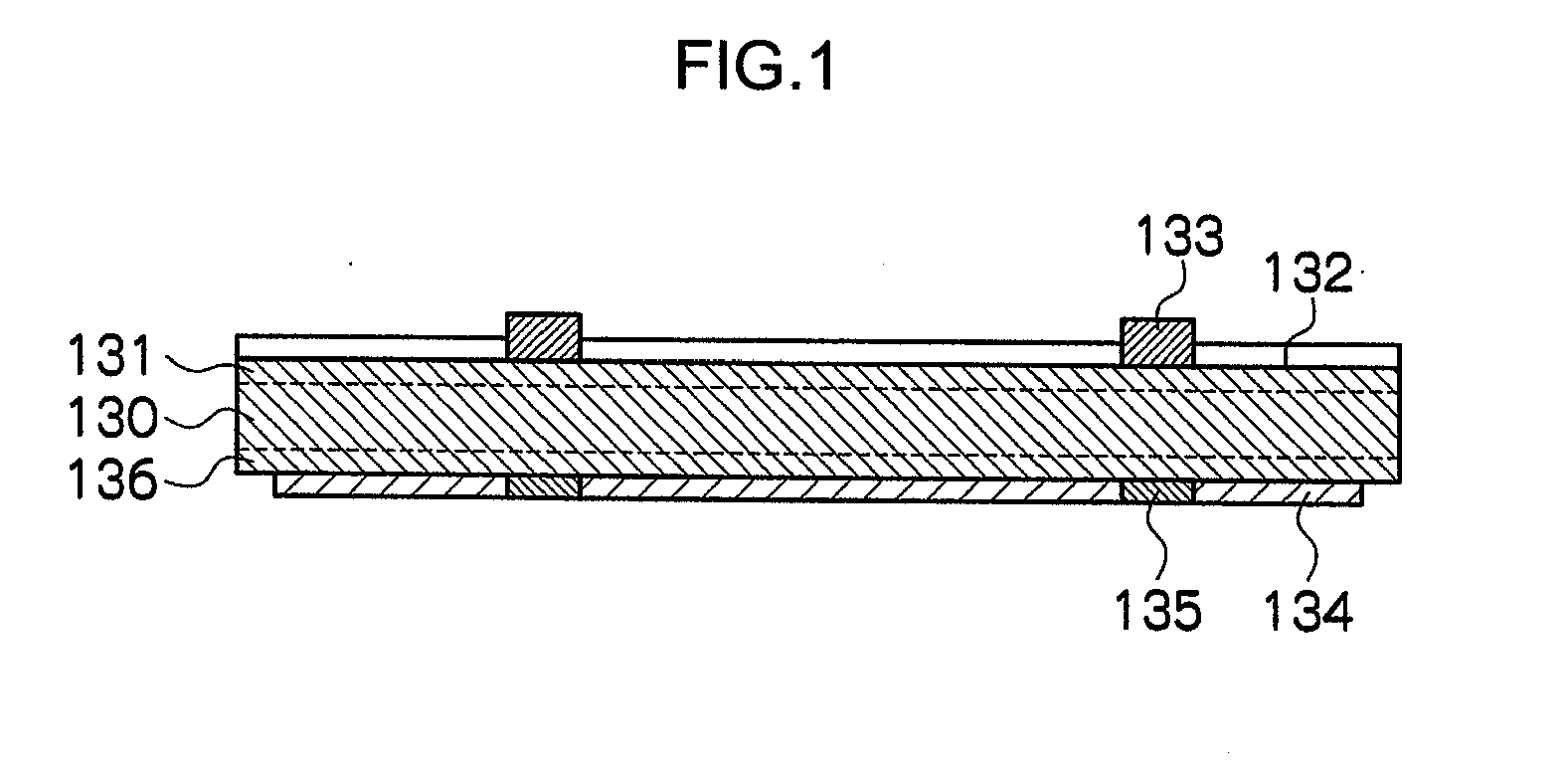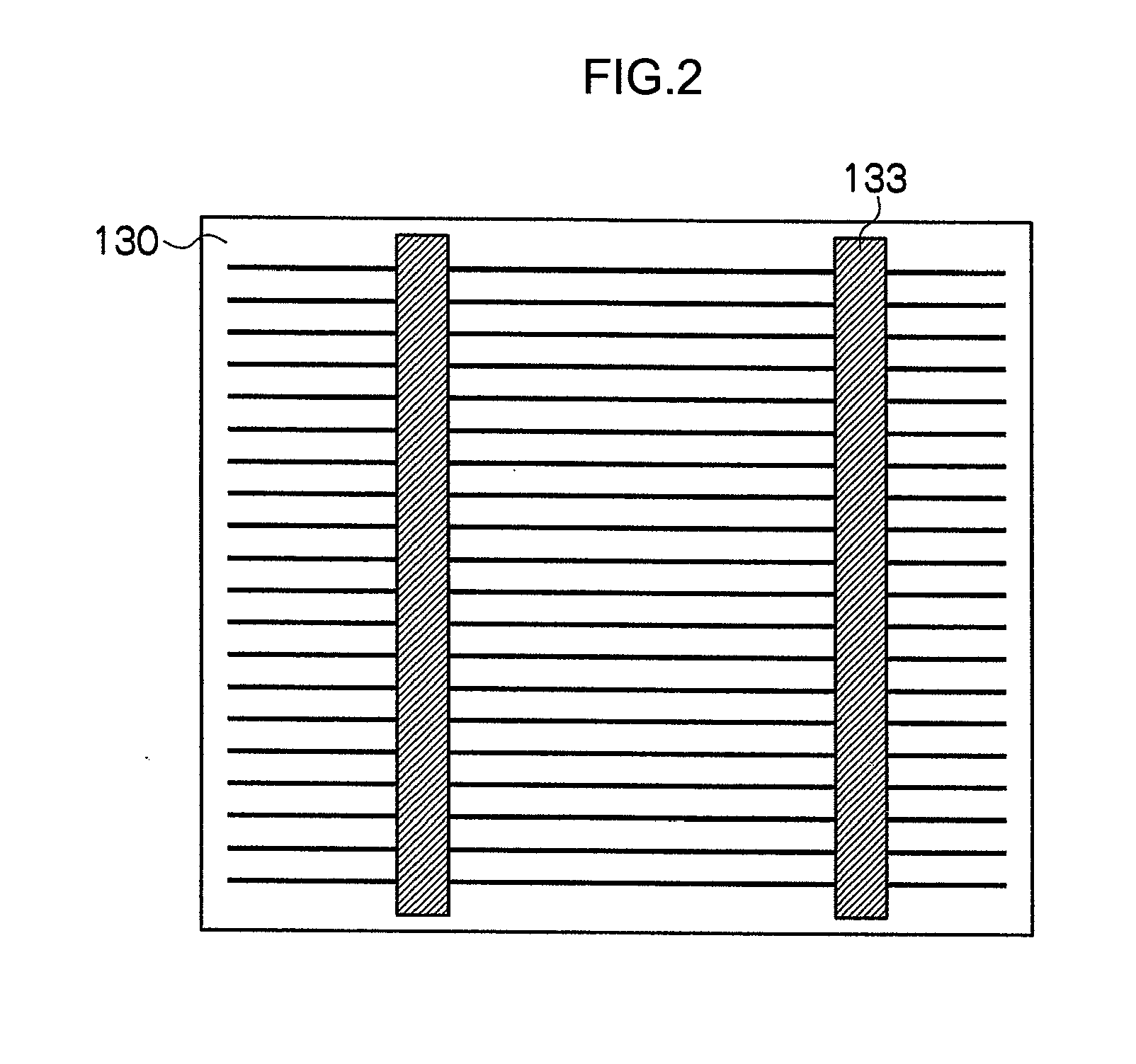Paste composition for electrode and photovoltaic cell
a technology of photovoltaic cells and compositions, applied in the direction of non-conductive materials with dispersed conductive materials, metal/alloy conductors, conductors, etc., can solve the problem of oxidation resistance of copper materials, and achieve the effect of low resistivity and low resistan
- Summary
- Abstract
- Description
- Claims
- Application Information
AI Technical Summary
Benefits of technology
Problems solved by technology
Method used
Image
Examples
example 1a
(a) Preparation of Paste Composition for Electrode
[0154]A phosphorous-containing copper alloy including 1% by mass of phosphorous is prepared, dissolved, made into powder by a water atomization method, then dried and classified. The classified powders were blended and subjected to deoxidation / dehydration treatments to prepare phosphorous-containing copper alloy particles including 1% by mass of phosphorous. Further, the particle diameter of the phosphorous-containing copper alloy particle (D50%) was 1.5 μm.
[0155]A glass including 32 parts of vanadium oxide (V2O5), 26 parts of phosphorous oxide (P2O5), 10 parts of barium oxide (BaO), 10 parts of tungsten oxide (WO3), 1 part of sodium oxide (Na2O), 3 parts of potassium oxide (K2O), 10 parts of zinc oxide (ZnO), and 8 parts of manganese oxide (ZnO) (hereinafter abbreviated as “G19” in some cases) was prepared. The glass G19 obtained had a softening point of 447° C. and a crystallization temperature of 600° C. or higher.
[0156]By using t...
example 2a
[0161]In the same manner as in Example 1A, except that the temperature of the heating treatment (sintering) upon forming an electrode was changed from 850° C. to 750° C. for 10 seconds in Example 1A, a photovoltaic cell 2A having a desired electrode formed therein was prepared.
example 3a
[0162]In the same manner as in Example 1A, except that 1 part of phosphoric acid was further added, and the particle diameter (D50%) of the silver particle was changed to 1 μm in Example 1A, a photovoltaic cell 3A having a desired electrode formed therein was prepared.
PUM
| Property | Measurement | Unit |
|---|---|---|
| temperature | aaaaa | aaaaa |
| temperatures | aaaaa | aaaaa |
| TG- | aaaaa | aaaaa |
Abstract
Description
Claims
Application Information
 Login to View More
Login to View More - R&D
- Intellectual Property
- Life Sciences
- Materials
- Tech Scout
- Unparalleled Data Quality
- Higher Quality Content
- 60% Fewer Hallucinations
Browse by: Latest US Patents, China's latest patents, Technical Efficacy Thesaurus, Application Domain, Technology Topic, Popular Technical Reports.
© 2025 PatSnap. All rights reserved.Legal|Privacy policy|Modern Slavery Act Transparency Statement|Sitemap|About US| Contact US: help@patsnap.com



